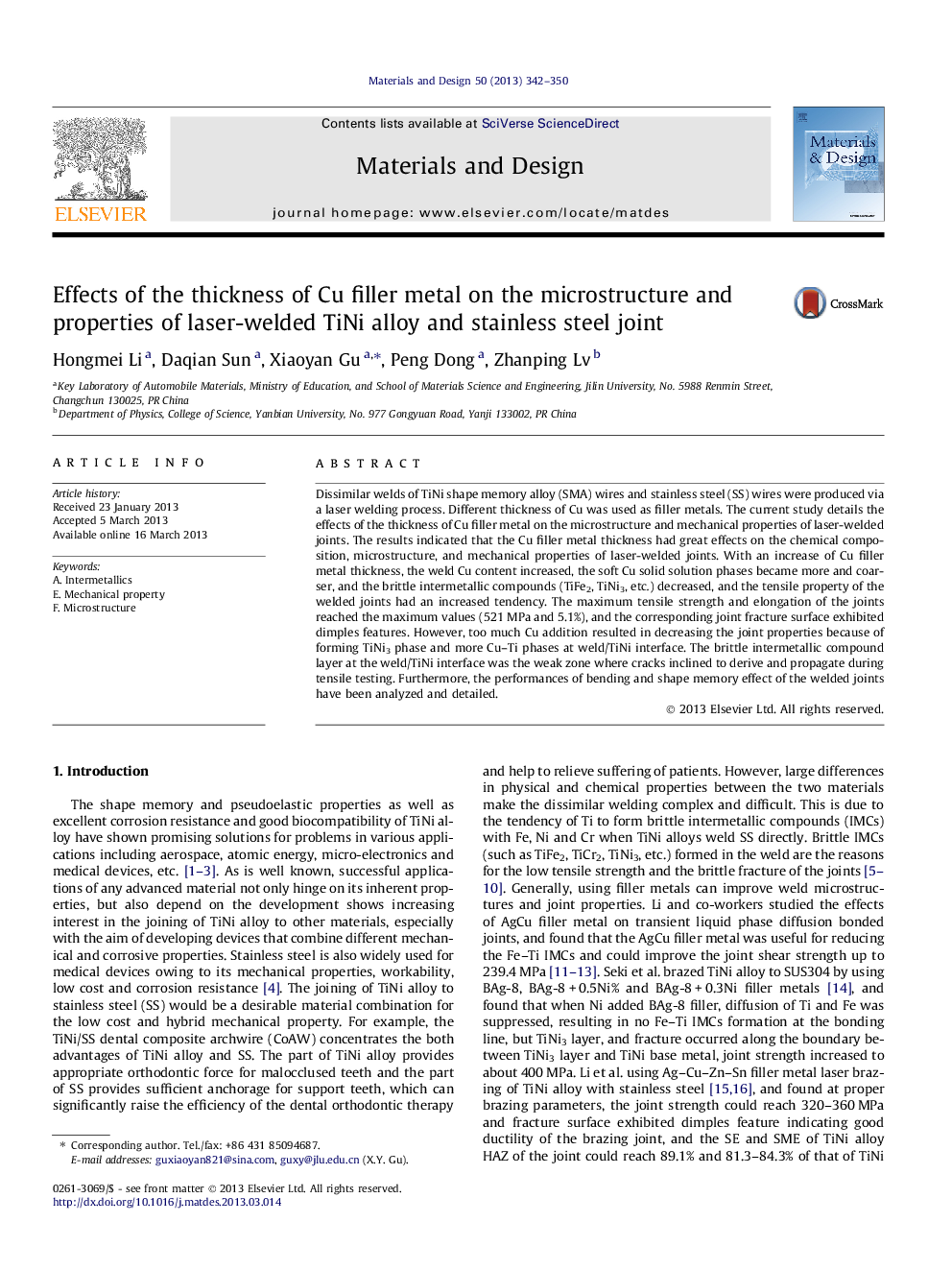| کد مقاله | کد نشریه | سال انتشار | مقاله انگلیسی | نسخه تمام متن |
|---|---|---|---|---|
| 829945 | 1470347 | 2013 | 9 صفحه PDF | دانلود رایگان |

• TiNi alloy and steel was successfully joined by laser welding with Cu filler metal.
• Weld composition and structure changed by different thickness of Cu filler metal.
• Cu globules with different size dispersed in the weld metal.
• Hard Fe–Ti and Ti–Ni IMCs replaced by soft α-Cu and Cu–Ti IMCs.
• Joint properties have great increase by using suitable thickness of Cu filler metal.
Dissimilar welds of TiNi shape memory alloy (SMA) wires and stainless steel (SS) wires were produced via a laser welding process. Different thickness of Cu was used as filler metals. The current study details the effects of the thickness of Cu filler metal on the microstructure and mechanical properties of laser-welded joints. The results indicated that the Cu filler metal thickness had great effects on the chemical composition, microstructure, and mechanical properties of laser-welded joints. With an increase of Cu filler metal thickness, the weld Cu content increased, the soft Cu solid solution phases became more and coarser, and the brittle intermetallic compounds (TiFe2, TiNi3, etc.) decreased, and the tensile property of the welded joints had an increased tendency. The maximum tensile strength and elongation of the joints reached the maximum values (521 MPa and 5.1%), and the corresponding joint fracture surface exhibited dimples features. However, too much Cu addition resulted in decreasing the joint properties because of forming TiNi3 phase and more Cu–Ti phases at weld/TiNi interface. The brittle intermetallic compound layer at the weld/TiNi interface was the weak zone where cracks inclined to derive and propagate during tensile testing. Furthermore, the performances of bending and shape memory effect of the welded joints have been analyzed and detailed.
Journal: Materials & Design - Volume 50, September 2013, Pages 342–350